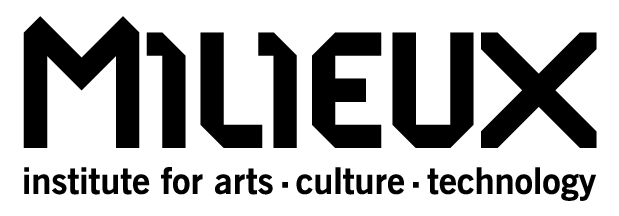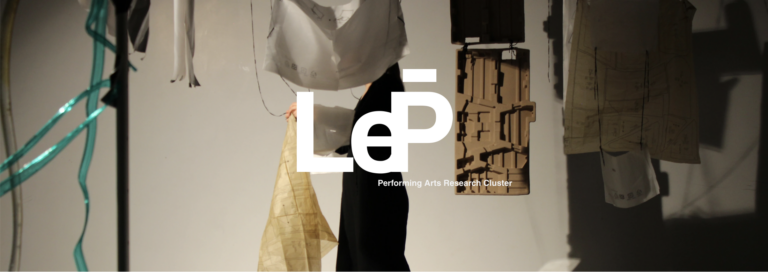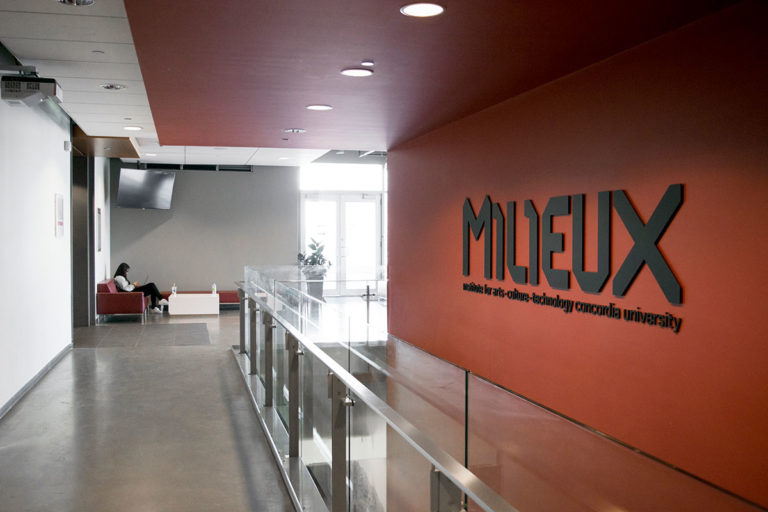From Oct. 13 to 18, more than 20 Milieux students, faculty and collaborators participated in the 2020 edition of the International Symposium of Electronic Arts.
Originally founded in the Netherlands, ISEA has been a leading platform for research in the electronic arts for the past 30 years. Built on an ethos of interdisciplinary exchange and creative exploration, ISEA’s annual symposium gathers a community to share and explore cutting-edge work.
The Milieux Institute had the opportunity to be an organizing partner of this year’s edition, and under normal circumstances, would have welcomed ISEA back to Montreal (in which it was headquartered from 1995-2001). However, because of the pandemic, ISEA took the leap into cyberspace. This adaptation freed ISEA from spatial restrictions of an in-person conference, and created the opportunity to share Montreal’s digital art community with participants, artists and researchers around the world.
This adaptation only served to underscore the importance of this year’s theme, “Why Sentience?” The term sense, as the root of sentience, has a complex etymology that guided much of this year’s exploration at ISEA. Housing meanings that span from reason and intelligibility to feeling, sensation and emotion, the ambiguity of sentience reaches toward the heart of our experience of being with others (human, animal or otherwise). Operating in a space between feeling and thinking, and taking a share in both, sentience indicates the possibility of a response, of listening and touching, of an understanding that reaches towards the feeling of the other, each time in its own singular fashion.
This possibility of sharing was at the heart of Machine Menagerie, a project by Speculative Life members, Joe Thibodeau and Ceyda Yologomorez. Presenting on the first day of the conference, Joe and Ceyda explored the possibility of relating to non-human entities in their paper, Open-Source Sentience: The Proof Is In The Performance. Using research performance methods, and six tiny autonomous robots, Machine Menagerie investigates the nature of human-machine interactions and examines the construction of sentience across cultural and historical contexts. We sat down with Joe and Ceyda to dive deeper into their work in our ISEA artist interview series.
Shifting the tone to exploratory ecology, Csenge Kolozsvari’s Artist Talk on Thursday afternoon examined their live video performance, The Power of the Spill. Using choreographic techniques and algorithmic processes, The Power of The Spill investigates visual perception and the vitality of objects. Illuminating our ecological affordances and exchanges, their work aims at providing an alternative topology for thinking through cross-species relations. Explore more of Csenge’s work with SenseLab, The Power of the Spill and other pieces at their website.
Contributing to the ecological themes, Matthew Halpenny’s presentation, Designing Technology for Symbiosis Between Natural Systems and Information Infrastructure, examined issues of human-bios relationality. Centered around Myocene, a bio-art sculpture that uses a combination of reanimated electronic waste and live cell cultures, Matthew’s presentation examined dis-integration of the technical and the natural. Critiquing the formation of the “human sym-bolic bubble”, Myocene intervenes at the threshold of human-environment relations, clearing space for new, more symbiotic ecologies. Check out Matthew’ work with Speculative Life, and sommes collective at their respective websites.
Learn more about Gabrys's work on forests and sensing with her project Smart Forests. Her keynote live now at #ISEA; https://t.co/ZXErJ2qq8L#MilieuxXISEA #Concordia
— Milieux Institute (@Milieux_news) October 15, 2020
Advancing the themes of non-human relationality central to this year’s edition of ISEA, Suzanne Kite and Devin Ronneberg’s sculpture, Telling Rock, proposes an ethics of materiality in the context of artificial intelligence. Grounded in Kite’s research on Lakhota ontology, and Devin’s experience with composite materials, Telling Rock uses artificial intelligence and interactive sensors to create a sculpture that is actively-engaged with its interactive environment. Equal parts technical achievement and spiritual invocation, Telling Rock listens in to our ethical entanglements with materials and machines, and enjoins us to ask: how can we make things the right way? Learn more about the process and thinking behind the project through our special ISEA feature interview with Devin and Suzanne on the Milieux blog.
“The question of politics is a question of aesthetics and, vice versa, the question of aesthetics is a question of politics. I use the word aesthetics here in the widest sense, where aísthēsis means sensory perception, and where the question is, therefore, that of feeling and sensibility in general.”
– Bernard Stiegler, Symbolic Misery (Volume 1)
Exploring the intrication of data and self-hood, Samuel Thulin’s project, Hemo-Resonance, sonfies data collected from his daily experience of type-1 diabetes. By thinking beyond a logic of self-optimization, and the ideal of a healthy body, the sound world produced by Thulin voices the multiplicity of affects, moments and relations that constitute this personal archive. Creating space for different encounters with data, Data, Sense, Resonance, aims at a new and expansive aesthetic of digital-self relations. Learn more about Thulin’s extensive work at his website.
In other ways, ISEA created the opportunities for students to experiment and share collaborative work on the world stage. Through an intensive seminar entitled ISEA2020, Concordia Music Professor, Ricardo Dal Farra guided students in the production of digital art for this year’s conference.
By shifting to an online experience, ISEA 2020 demonstrated the power of the sensory networks and technological structures that connect us. Becoming increasingly crucial to the very sense of the world, these developments will only amplify the necessity of critical platforms like ISEA. By opening space for transformation and resistance, perhaps we can learn to truly feel with each other, human or otherwise.
Learn more about ISEA, their mission and their programming on their website.




